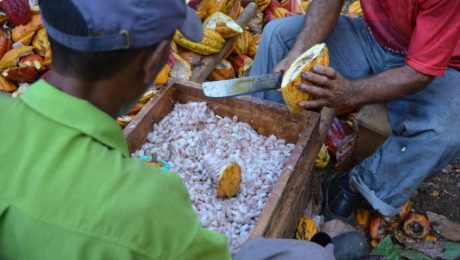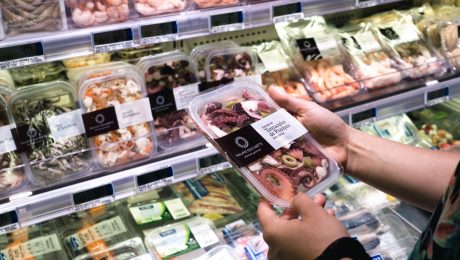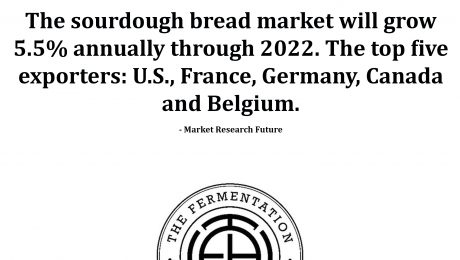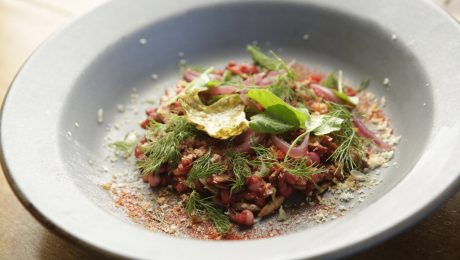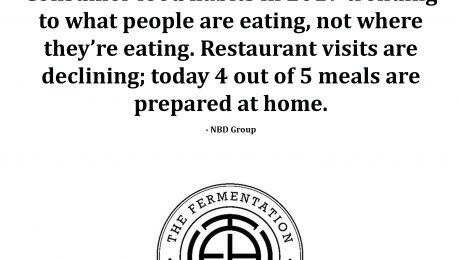The Fermentation Association (TFA), getting more people to enjoy fermented products. Join us at http://ow.ly/dfN030mfgBY .
Grocery Store Prices Expected to Rise – Fermented Food Products Will See Cost Differences
Grocery store food prices are expected to rise this year. Projections by the USDA show prices increasing 1-2% in 2019. Still, that’s the fourth straight year of deflating or lower-than-average inflating retail food prices. The biggest price increase for fermented products are dairy products (3-4%) and bakery products (2-3%). A few fermented products are projected to decrease in price: meats (-0.25% to +0.75%), processed fruit and vegetables (-1-0%) and nonalcoholic beverages (-0.25% to +0.75%). Dairy products will be a particular concern for the U.S. food industry. Because of trade tariffs imposed on Mexico and China, dairy exports are declining. In the U.S., demand for dairy products is “relatively weak,” but expected to recover.
Read more (Supermarket News)
- Published in Business
Is the Future of Chocolate in Brazil? Brazilian Chocolatiers Use Sustainable Cacao Farming
Is the future of chocolate in Brazil? Brazil is the 7th largest cocoa producer in the world. A Forbes articles highlights Brazilian chocolatiers that focus on the cacao cultivation process. These “bean to bar” products come from producers practicing sustainable farming methods. There are no preservatives, no dyes and the farm land is “cabruca,” a Brazilian form of agroforestry where much of the farm land is left untouched. The cacao plants are grown in open plantations, adhering to the country’s law that 20% of a farm’s forest floor must be kept intact and undeveloped. Cacao from the Leolinda family farm is fermented twice to improve impurities.
Read more (Forbes)
- Published in Business
Food Industry Lessons from the Great Recession: How Will Food Spending Change in an Economic Crisis?
Fermented food producers, it’s time to be vigilant. Economists predict America is on the cusp of a recession. Thankfully, sectors of the food industry remains strong in an economic downturn. Food is a basic necessity consumers won’t cut out of their budget.
But that’s no reason to wait out a recession without caution. That recession-proof statistic only applies to select parts of the food industry. During the Great Recession of 2007-2010, household food spending declined by 7 percent. The United States Department of Agriculture reported it was “the largest inflation-adjusted decline in food spending that accompanied a recession since 1984.” Food purchase patterns also changed, as budget-conscious consumers focused on money-saving methods.
Based on food spending data, there are key lessons fermentation leaders can use to prepare for an impending economic downturn. Here are five ways consumer food spending will change in a recession.
1. Grocery Store Spending Remains Fairly Steady
When the economy is bad, more consumers cook their own food. Spending at grocery stores dropped minimally during the Great Recession, falling only 1.3 percent from 2006 to 2009. The number of home-cooked meals increased, as did the amount of meals eaten in the home with family members.

2. Restaurant Spending Plummets
Restaurant spending rises and falls along with income levels. Dollars spent on food away from home declined 18 percent ($47 billion) during the Great Recession. This large dip in restaurant sales didn’t recover for 10 years. Restaurant sales began decreasing in 2006, and didn’t return to pre-recession levels until 2016. Restaurant Business Online said 2009 and 2010 “would prove to be the
worst two years in the modern era for the restaurant industry.”
3. Consumers Focus on Health
During an economic crisis, consumers are not turning to cheaper, unhealthier food options. USDA data shows adults had “increased concern” for their nutrition during the Great Recession. When the economy was at its worst, more adults were rating their diet as excellent, very good or good as compared with fair or poor. Food quality also improved. Total calories from fat and saturated fat declined; cholesterol content dropped, while fiber intake increased. More adults were also using the Nutrition Facts Panel on food packaging, too.
4. Discount Retailer Sales Rise
As consumers cut their budget, they trade high-end stores for discount, big-box retailers. Sales at Costco, Wal-Mart and Target all climbed 15 percent from 2007 to 2008. Economists point to the purchasing power of big-box retailers. Big-box prices help the retail giants outlast luxury stores and small shops during a recession. Natural supermarket Whole Foods, once criticized for premium prices, shed their “Whole Paycheck” reputation after the recession decreased their sales. In 2008, they began offering discounts, adding store brands and emphasizing value in their marketing.
5. Cost-Cutting Methods Reign
Consumers eliminate discretionary spending in a recession. They clip coupons, watch food sales, shop for generic brands and buy items in bulk. Interestingly, the average number of shopping trips to the grocery store increased during the latest recession, but the amount paid per transaction was 12 percent less. Private-label products (or generic or store brands) expanded faster than well-known, national brands during the recession. A record number 810 new private label food and beverage products was released during the recession, seven times more than the amount released in 2001.
(Photo: Foodies Feed)
(Graph: USDA)
- Published in Business
Sourdough Bread Market to Grow 5.5% Annually
The Fermentation Association (TFA), getting more people to enjoy fermented products. Join us at fermentationassociation.org .
- Published in Business
Fermentation Dominating 2019 Food Prediction Lists
Fermentation is dominating 2019 food prediction lists. The New York Times says fermented foods and fermented drinks will rule in 2019. The year’s flavor profile will be “Sour and funky, with shades of heat,” melding fermented ingredients with millennial taste buds. Probiotics and prebiotics will continue to reign as consumers focus on gut health. “As the obsession with digestive health dovetails with the fascination for fermenting, kimchi, sauerkraut and pickled things will work their way into new territory. Smoothies with kefir will be popular, and kombucha will show up in unexpected places like salad dressings,” the article continues. What will you be eating in 2019?
Read more (New York Times)
- Published in Business
2019 Consumer Habits Trending Toward What People Are Eating, Not Where
- Published in Business
Brew Dr. Kombucha First National Kombucha Brand to Receive B Corp Certification
Brew Dr. Kombucha became the first nationally distributed kombucha brand to receive a B Corporation certification. The prestigious ranking is given to companies that score high in social sustainability and environmental performance. Brew Dr. sources 100 percent renewable energy, implements a closed-loop brewing process and donates 1 percent of revenue to local environmental non-profits. Matt Thomas, founder and CEO of Brew Dr. Kombucha, said the B Corp certification “is one of the proudest moments I’ve experienced since founding Brew Dr. Kombucha.” He stressed that his company places “equal value on people, planet and profits.” More and more consumers want healthy products, but they also want their products to be created using both environmentally and ethically responsible efforts.
Read more (BevNet) (Photo: Brew Dr. Kombucha)
- Published in Business
Fermented Foods No. 1 Superfood of 2018
Fermented foods are the No. 1 superfood of 2018, according to a poll of U.S. dietitians. “The rising popularity of fermented foods demonstrates how consumers have expanded their definition of wellness to include improved gut health, which is a benefit of consuming fermented foods,” according to Food Business News. The article highlighted numerous chefs experimenting with fermented ingredients, and fermented food producers who share the health benefits of eating fermented products. These food industry experts point out that consumers today are looking for a twist on classic dishes, and fermented foods add bold flavors. Like pairing pickled veggies with tacos, adding fermented Brussels sprouts on a tapas plate and brining French fries in a salt and cabbage solution.
Read more (Food Business News) (Photo: Cultured Love)
- Published in Food & Flavor
Global Kombucha Market to Reach $1.8 Billion in Sales by 2019
The Fermentation Association (TFA), getting more people to enjoy fermented products. Join us at http://ow.ly/dfN030mfgBY .
- Published in Business
TIME Magazine’s Latest Cover Star: Beer
The latest special edition of TIME magazine featured a familiar cover star: beer. In “The Story of the World’s Most Celebrated Drink,” TIME attributes the drink’s popularity largely to a social factor. People like to drink beer in social settings – it has far less alcohol, it’s a staple at sporting events and people who frequent pubs have a wider social circle. And great news for local, craft brewers – today, beer drinkers prefer local breweries over bars. (TIME) https://goo.gl/ra98Bk
- Published in Business


